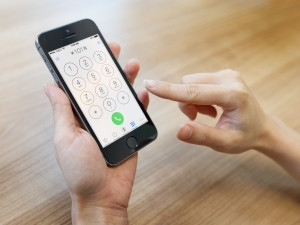Cape Town, 24 Nov 2015

The terms 'mobile engagement' and 'USSD' make incongruous partners: Mobile engagement is the buzz-phrase of the moment, while USSD is often regarded as an archaic hangover from the days of feature phones.
While the market penetration of smartphones in South Africa is increasing, one thing is for sure: the lower LSM portion, by far the largest segment of the market, is still dominated by feature phones that have little or no Internet capability.
And even when their devices can consume data, many users either don't switch them on or cannot afford to pay for data.
How to engage with low-end consumers?
So how then do companies engage with their low-end consumers? Consumer engagement includes the ability to present and exchange relevant, timely information, implying that not only must companies give information to their consumers, but they should also enable them to initiate or respond to that communication.
SMS is costly: even though outbound SMS rates have fallen dramatically in the last five years, companies still pay up to R0.20 per message. Inbound is even worse; consumers can pay up to R0.80 during peak times to initiate a message.
And that's just for one message, one-way.
USSD is gaining in popularity
On the other hand, two-way USSD sessions cost the consumer R0.20 for 20 seconds - usually ample time for several interactions.
In addition, everyone using prepaid packages (again - by far the majority of the market) is familiar with USSD - everyday interactions such as balance enquiries are executed by dialing a USSD shortcode like *100#. So a call to action that asks users to dial *120*1234# is instantly familiar.
"We're finding that USSD is gaining in popularity," says Rob Mousley, head of Grapevine's products group.
"As marketers become more sophisticated and want to find out more about their consumers," he adds, "they're turning to USSD to gather more information. For example, on a competition line, they might ask not only for a bottle top code, but also the consumer's gender or e-mail address. It's much more difficult and costly to do that with SMS."
Grapevine's developers API or managed service
While Grapevine offers a USSD API to developers who want to code their own USSD applications, they also have a team dedicated to building and managing apps on behalf of clients.
"We recently built a USSD app for the Department of Health for disabled citizens to register for benefits," Mousley says. "USSD is the only technology that works for most of these citizens."
Share